Special Report
These Are the Best Suburbs to Live in Every State
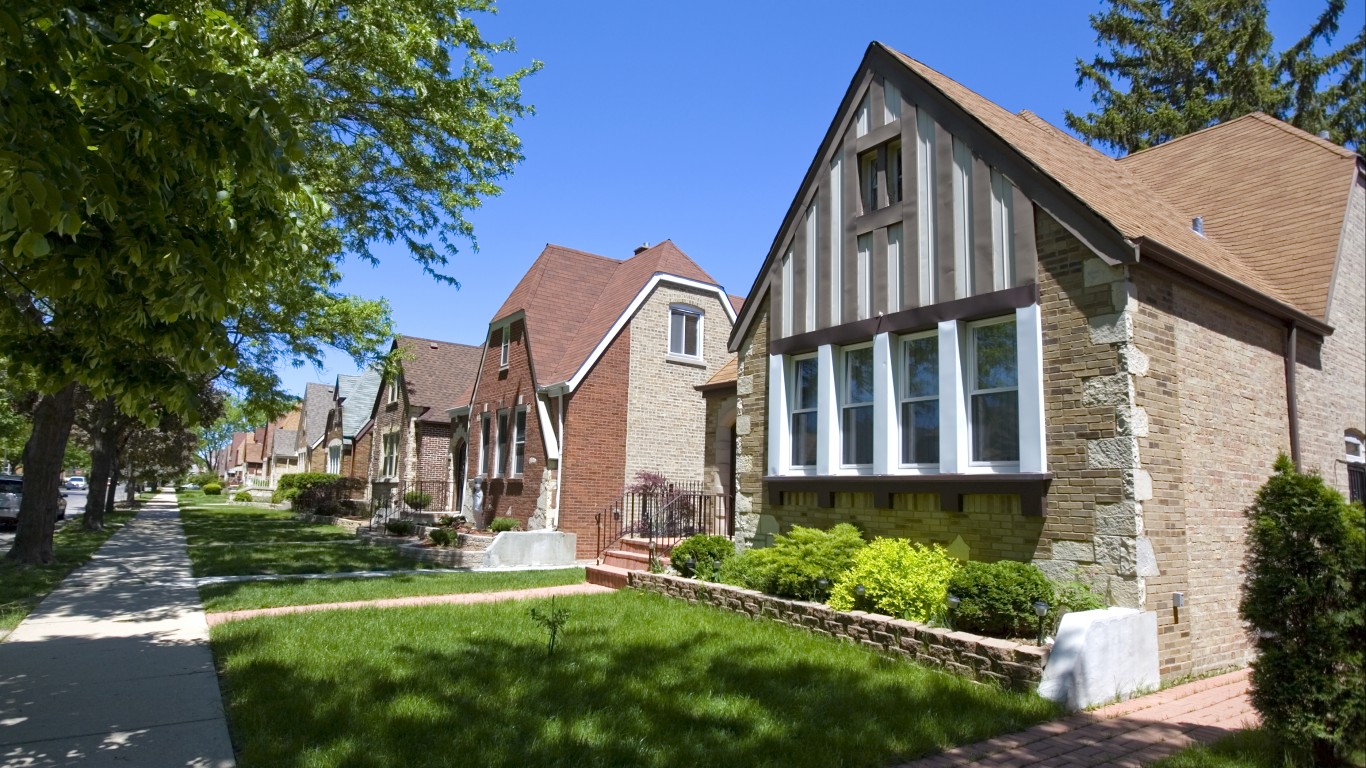
Published:
Last Updated:

In the latter half of the 20th century, the popularity of suburbs surged in the United States, and for many, suburban life came to mean the realization of the American Dream. For millions of Americans, the suburbs offered what life in the inner-cities and rural countryside could not — bigger, affordable homes, more space, increased privacy, and safer streets — without sacrificing access to jobs.
While there is no official government definition of a suburb, they are generally thought of as smaller communities located within commuting distance of a large city. According to the U.S. Census Bureau’s American Housing Survey, just over half of all Americans say they live in a suburban neighborhood — compared to 27% who live in an urban environment, and 21% who reside in rural areas.
24/7 Wall St. created a weighted index of 10 measures — including commute time, home size, crime rates, and income — to identify the best suburb in every state. Suburbs were ranked higher in this index if they performed especially well in these measures in comparison to the closest major city.
Americans often move to the suburbs to buy a home. Nationwide, about 64% of homes are occupied by their owner. Meanwhile, only two suburbs on this list have a homeownership below than the national rate — and the majority of them have homeownership rates above 90%.
Another primary reason many Americans choose to move out of cities and into suburban neighborhoods is lower crime and increased safety. While, overall, American cities are far safer today than they were in the 1990s, violent crime still tends to be more concentrated in urban areas. Indeed, many of the suburbs on this list are just outside some of the most dangerous cities in the country, including Baton Rouge, Louisiana, Chicago, Cincinnati, Houston, and Oklahoma City. Here is a look at the 50 most dangerous cities in America.
As Americans, and millennials in particular, appear to be increasingly likely to choose suburban life, it is perhaps not surprising that many of the communities on this list have reported a population increase in the last year. Some of the suburbs on this list are located in a county with state-leading population growth since 2010. Here is a full list of the fastest growing county in every state.
Click here to see the best suburb in every state
Click here to read our methodology
1. Alabama: Highland Lakes
> Population: 5,394
> Median household income: $149,307 (221% higher than state median)
> Homeownership rate: 98.0%
> Avg. commute time: 30.3 minutes
> Metropolitan area: Birmingham-Hoover
[in-text-ad]

2. Alaska: Chena Ridge
> Population: 6,155
> Median household income: $97,464 (28% higher than state median)
> Homeownership rate: 79.1%
> Avg. commute time: 19.9 minutes
> Metropolitan area: Fairbanks

3. Arizona: Paradise Valley
> Population: 13,961
> Median household income: $175,673 (228% higher than state median)
> Homeownership rate: 92.5%
> Avg. commute time: 23.1 minutes
> Metropolitan area: Phoenix-Mesa-Chandler

4. Arkansas: Maumelle
> Population: 17,967
> Median household income: $72,335 (65% higher than state median)
> Homeownership rate: 72.3%
> Avg. commute time: 25.3 minutes
> Metropolitan area: Little Rock-North Little Rock-Conway
[in-text-ad-2]
5. California: Atherton
> Population: 7,182
> Median household income: $250,000+ (at least 272% higher than state median)
> Homeownership rate: 93.4%
> Avg. commute time: 24.5 minutes
> Metropolitan area: San Francisco-Oakland-Berkeley
6. Colorado: Cherry Hills Village
> Population: 6,542
> Median household income: $238,750 (265% higher than state median)
> Homeownership rate: 95.7%
> Avg. commute time: 20.9 minutes
> Metropolitan area: Denver-Aurora-Lakewood
[in-text-ad]
7. Connecticut: Old Greenwich
> Population: 6,860
> Median household income: $236,250 (220% higher than state median)
> Homeownership rate: 85.8%
> Avg. commute time: 37.5 minutes
> Metropolitan area: Bridgeport-Stamford-Norwalk
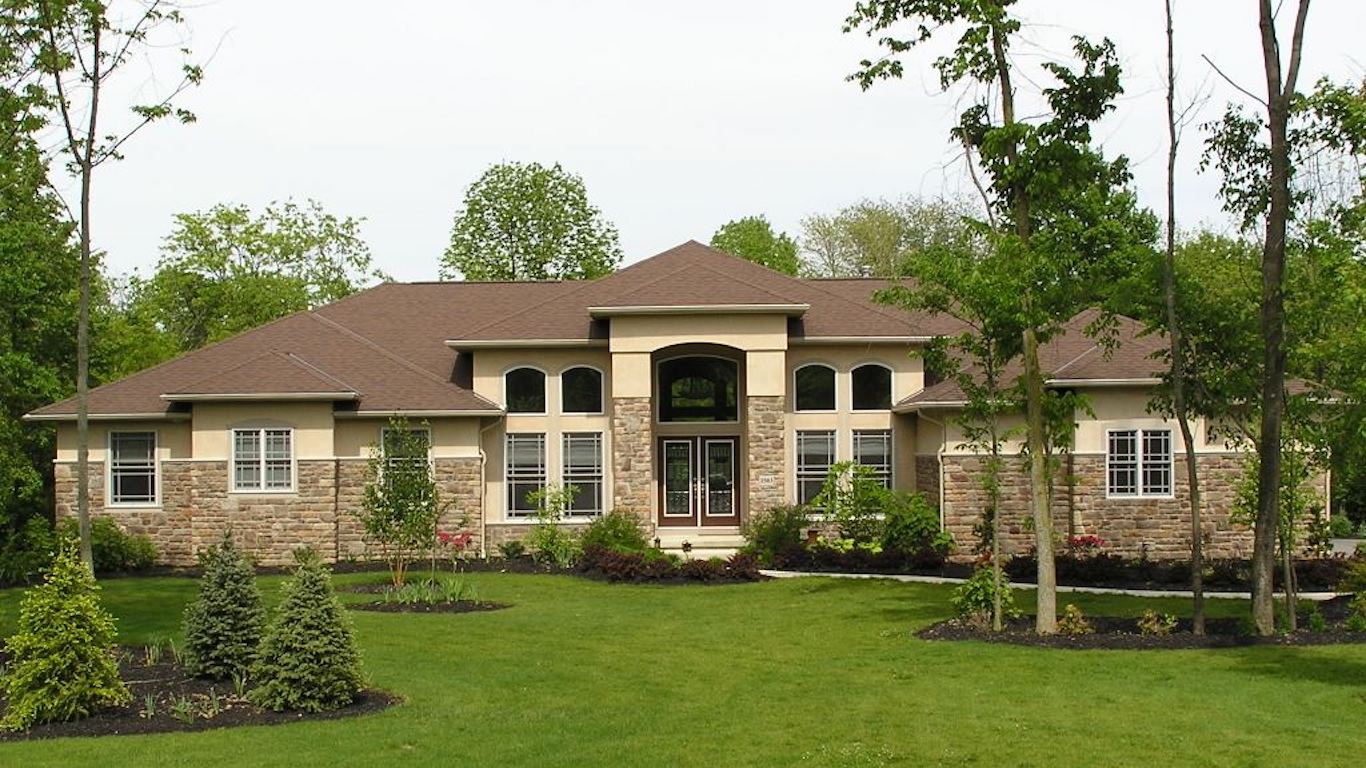
8. Delaware: North Star
> Population: 7,390
> Median household income: $141,618 (125% higher than state median)
> Homeownership rate: 95.2%
> Avg. commute time: 24.1 minutes
> Metropolitan area: Philadelphia-Camden-Wilmington
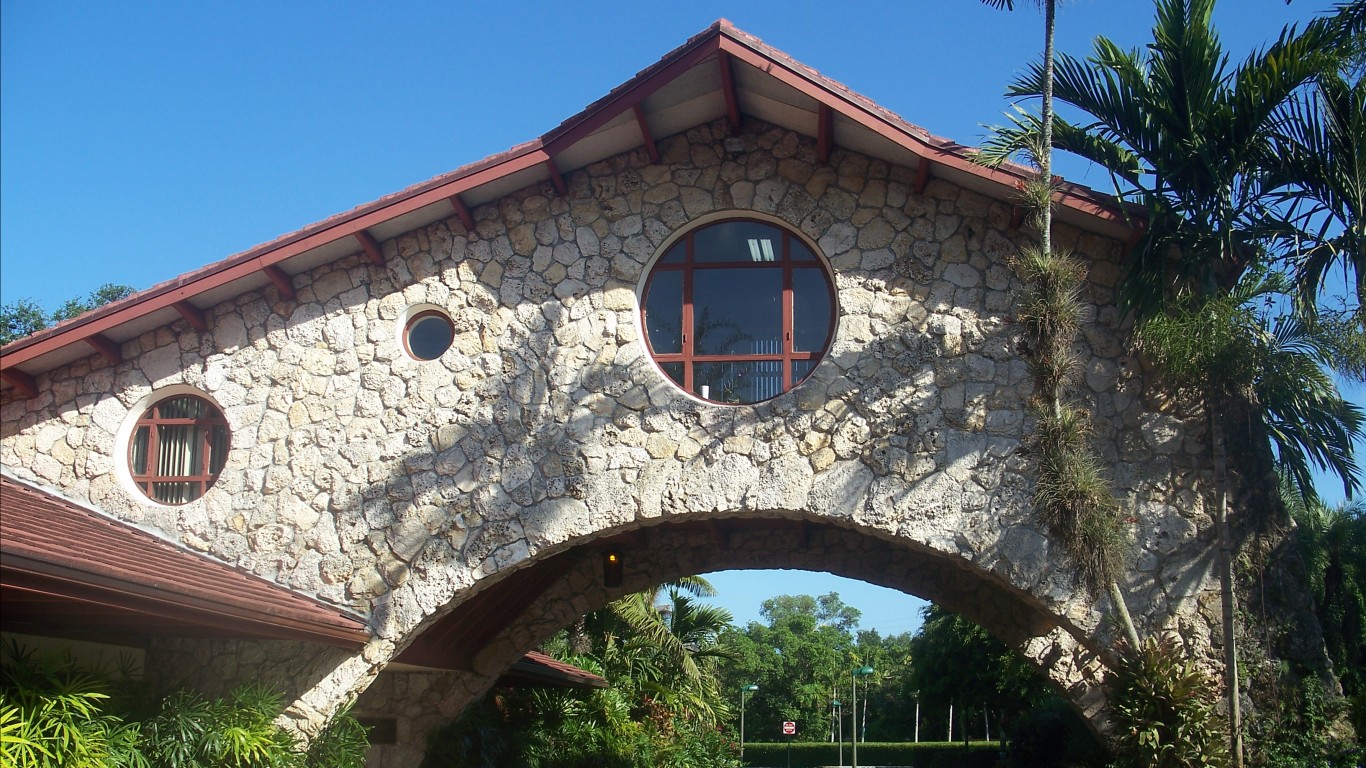
9. Florida: Pinecrest
> Population: 19,441
> Median household income: $152,643 (200% higher than state median)
> Homeownership rate: 77.0%
> Avg. commute time: 30.8 minutes
> Metropolitan area: Miami-Fort Lauderdale-Pompano Beach
[in-text-ad-2]
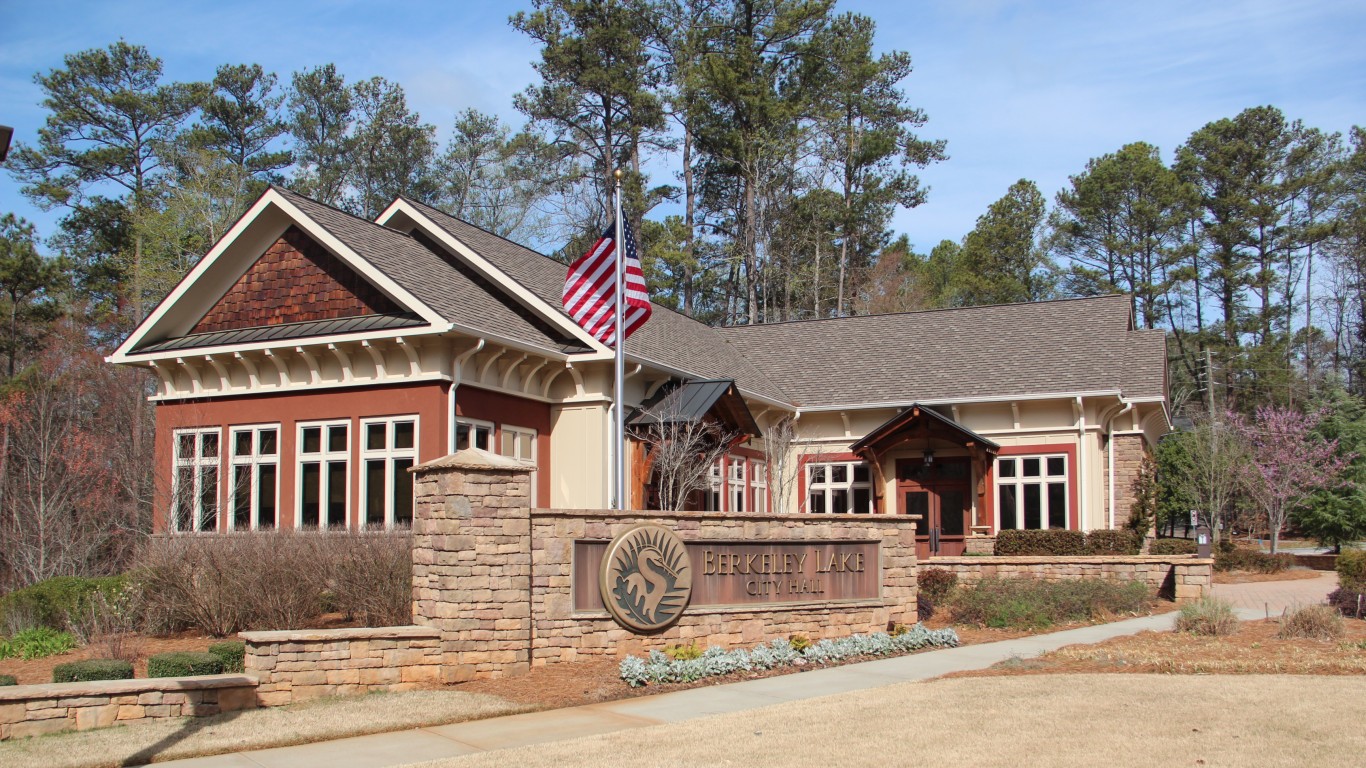
10. Georgia: Berkeley Lake
> Population: 2,005
> Median household income: $125,592 (137% higher than state median)
> Homeownership rate: 96.6%
> Avg. commute time: 32.2 minutes
> Metropolitan area: Atlanta-Sandy Springs-Alpharetta

11. Hawaii: Maunawili
> Population: 2,020
> Median household income: $143,750 (92% higher than state median)
> Homeownership rate: 89.8%
> Avg. commute time: 29.8 minutes
> Metropolitan area: Urban Honolulu
[in-text-ad]
12. Idaho: Hidden Springs
> Population: 2,515
> Median household income: $118,519 (132% higher than state median)
> Homeownership rate: 89.9%
> Avg. commute time: 22.8 minutes
> Metropolitan area: Boise City
13. Illinois: Winnetka
> Population: 12,504
> Median household income: $216,875 (254% higher than state median)
> Homeownership rate: 88.6%
> Avg. commute time: 37.0 minutes
> Metropolitan area: Chicago-Naperville-Elgin
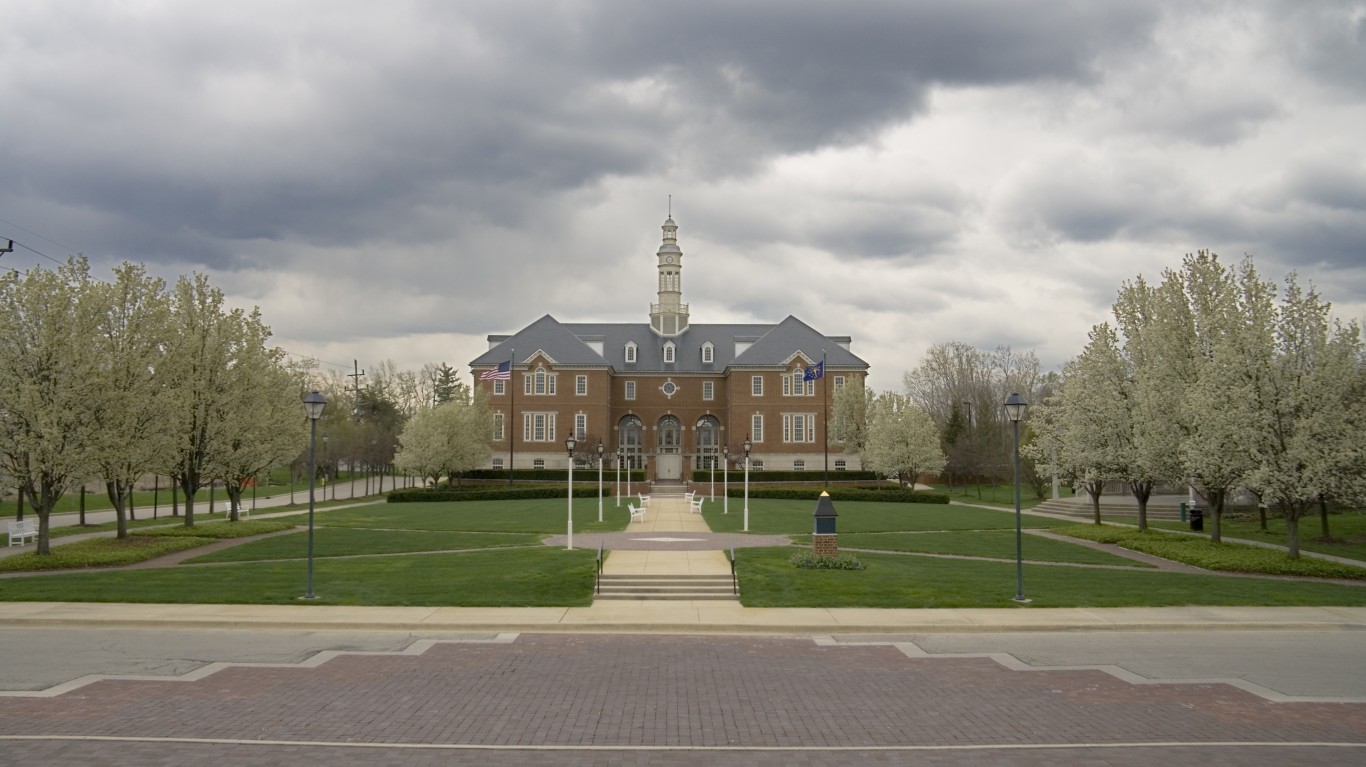
14. Indiana: Carmel
> Population: 88,595
> Median household income: $109,201 (109% higher than state median)
> Homeownership rate: 77.6%
> Avg. commute time: 24.2 minutes
> Metropolitan area: Indianapolis-Carmel-Anderson
[in-text-ad-2]

15. Iowa: Robins
> Population: 3,380
> Median household income: $120,938 (114% higher than state median)
> Homeownership rate: 96.8%
> Avg. commute time: 16.5 minutes
> Metropolitan area: Cedar Rapids

16. Kansas: Mission Hills
> Population: 3,578
> Median household income: $250,000+ (at least 351% higher than state median)
> Homeownership rate: 98.8%
> Avg. commute time: 17.5 minutes
> Metropolitan area: Kansas City
[in-text-ad]
17. Kentucky: Indian Hills
> Population: 2,958
> Median household income: $169,737 (265% higher than state median)
> Homeownership rate: 98.5%
> Avg. commute time: 17.5 minutes
> Metropolitan area: Louisville/Jefferson County

18. Louisiana: Village St. George
> Population: 6,802
> Median household income: $79,524 (70% higher than state median)
> Homeownership rate: 83.3%
> Avg. commute time: 22.6 minutes
> Metropolitan area: Baton Rouge
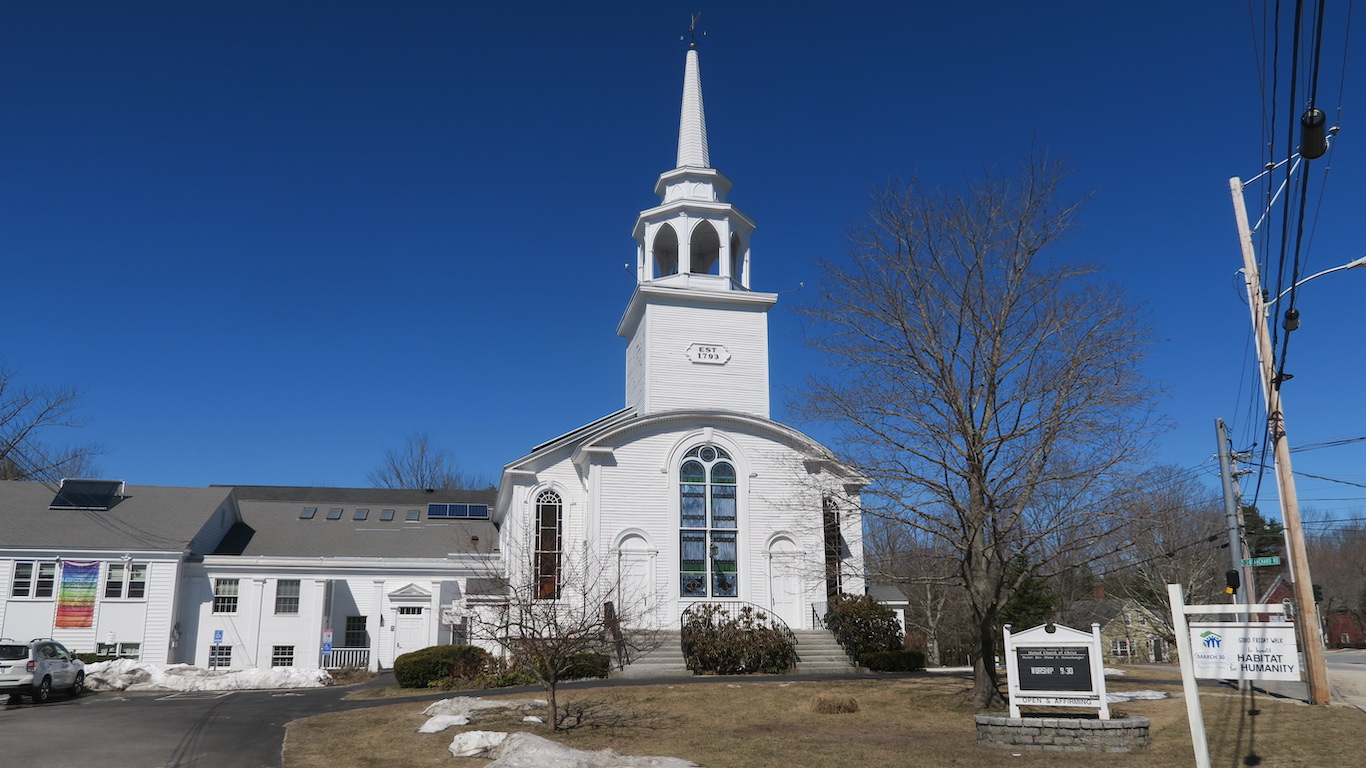
19. Maine: Cumberland Center
> Population: 2,492
> Median household income: $109,048 (106% higher than state median)
> Homeownership rate: 74.7%
> Avg. commute time: 22.6 minutes
> Metropolitan area: Portland-South Portland
[in-text-ad-2]
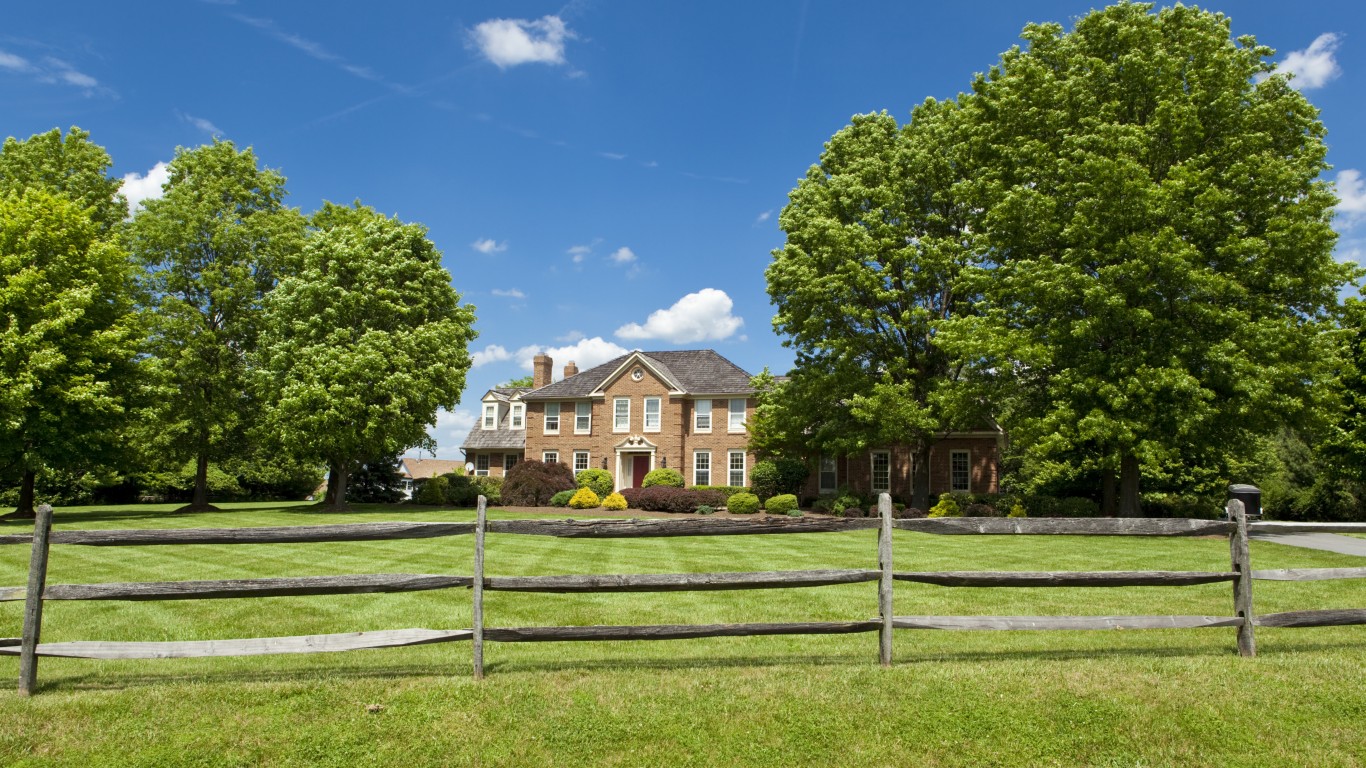
20. Maryland: Travilah
> Population: 12,204
> Median household income: $225,104 (185% higher than state median)
> Homeownership rate: 93.8%
> Avg. commute time: 34.8 minutes
> Metropolitan area: Washington-Arlington-Alexandria
21. Massachusetts: Dover
> Population: 2,385
> Median household income: $175,461 (137% higher than state median)
> Homeownership rate: 95.3%
> Avg. commute time: 31.1 minutes
> Metropolitan area: Boston-Cambridge-Newton
[in-text-ad]
22. Michigan: Bloomfield Hills
> Population: 3,981
> Median household income: $186,563 (254% higher than state median)
> Homeownership rate: 89.1%
> Avg. commute time: 22.5 minutes
> Metropolitan area: Detroit-Warren-Dearborn
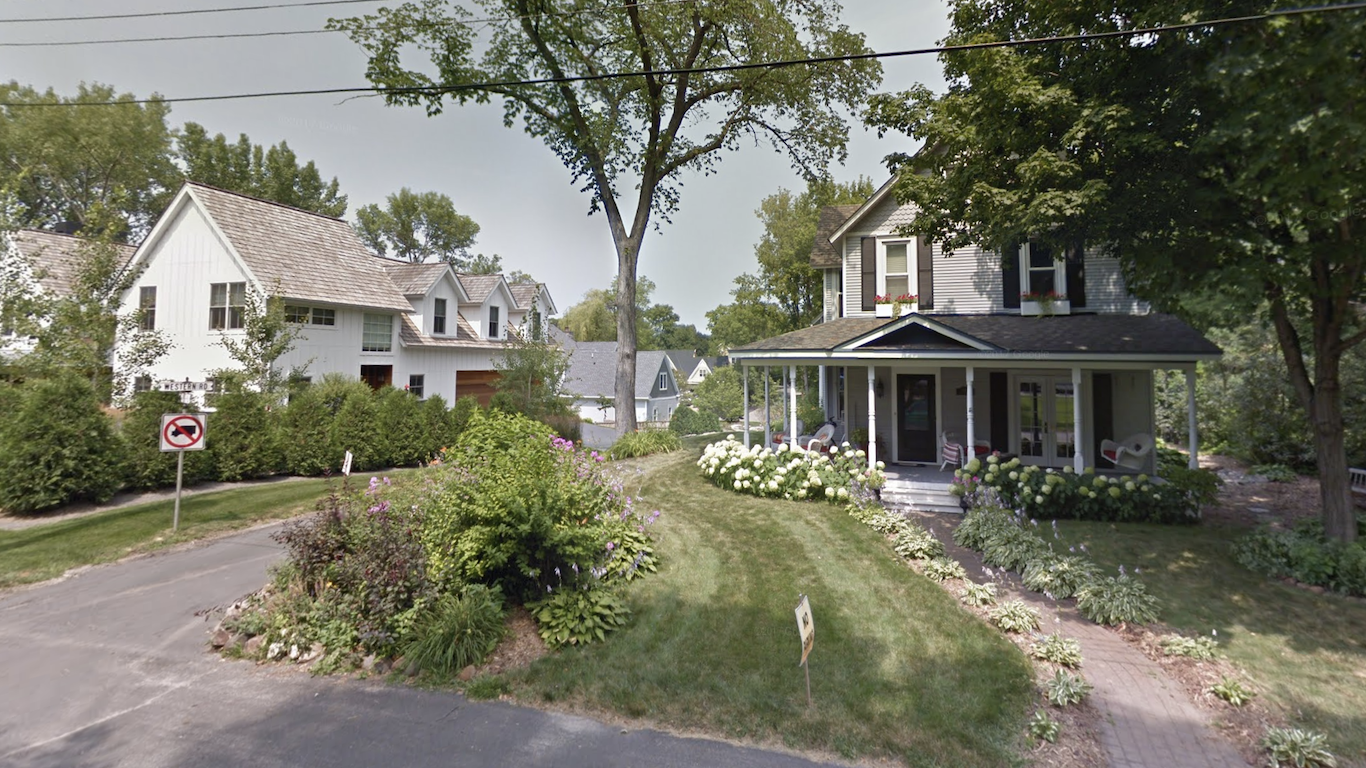
23. Minnesota: Deephaven
> Population: 3,818
> Median household income: $136,331 (108% higher than state median)
> Homeownership rate: 91.1%
> Avg. commute time: 21.2 minutes
> Metropolitan area: Minneapolis-St. Paul-Bloomington
24. Mississippi: Madison
> Population: 25,350
> Median household income: $103,121 (145% higher than state median)
> Homeownership rate: 92.0%
> Avg. commute time: 22.2 minutes
> Metropolitan area: Jackson
[in-text-ad-2]

25. Missouri: Ladue
> Population: 8,591
> Median household income: $203,250 (294% higher than state median)
> Homeownership rate: 97.5%
> Avg. commute time: 17.5 minutes
> Metropolitan area: St. Louis
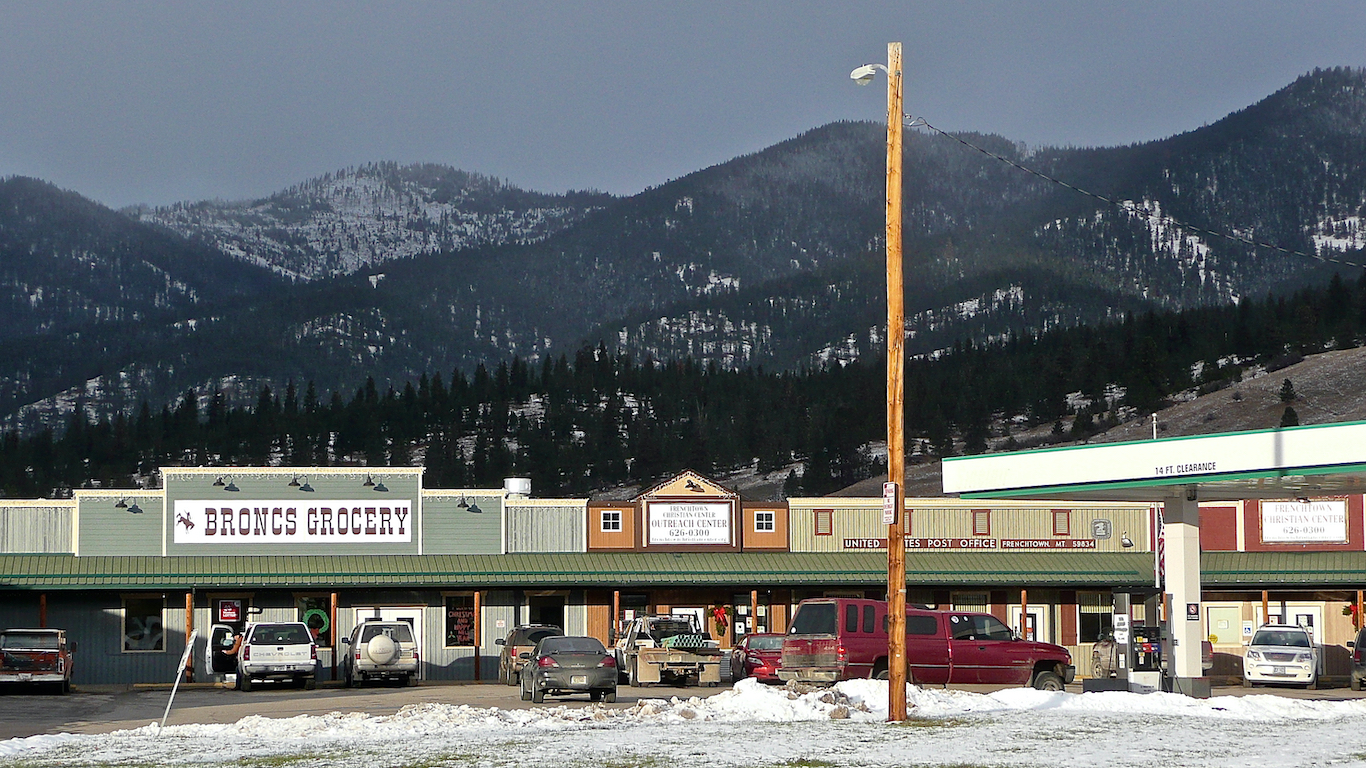
26. Montana: Frenchtown
> Population: 2,122
> Median household income: $59,052 (16% higher than state median)
> Homeownership rate: 89.6%
> Avg. commute time: 27.3 minutes
> Metropolitan area: Missoula
[in-text-ad]
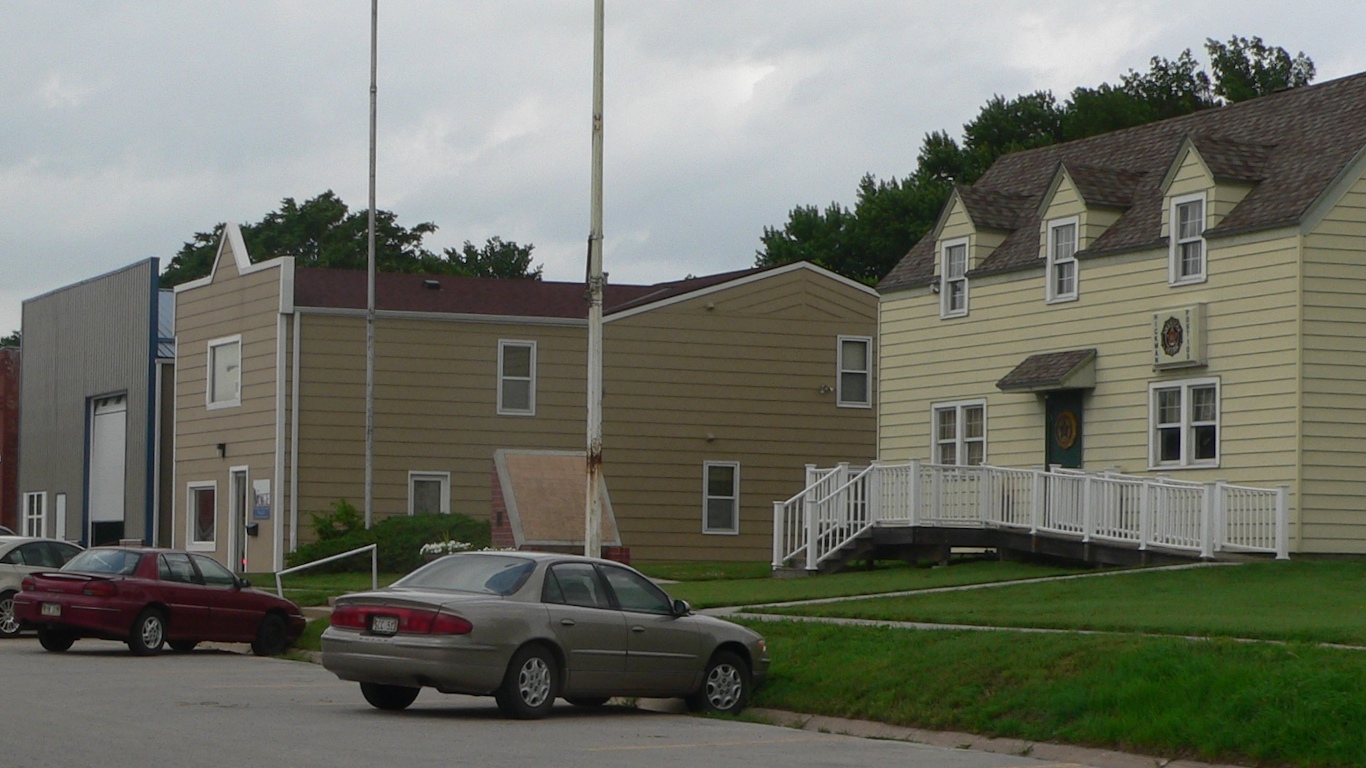
27. Nebraska: Hickman
> Population: 2,079
> Median household income: $89,609 (58% higher than state median)
> Homeownership rate: 79.2%
> Avg. commute time: 27.8 minutes
> Metropolitan area: Lincoln

28. Nevada: Spanish Springs
> Population: 16,458
> Median household income: $85,050 (53% higher than state median)
> Homeownership rate: 85.9%
> Avg. commute time: 28.2 minutes
> Metropolitan area: Reno
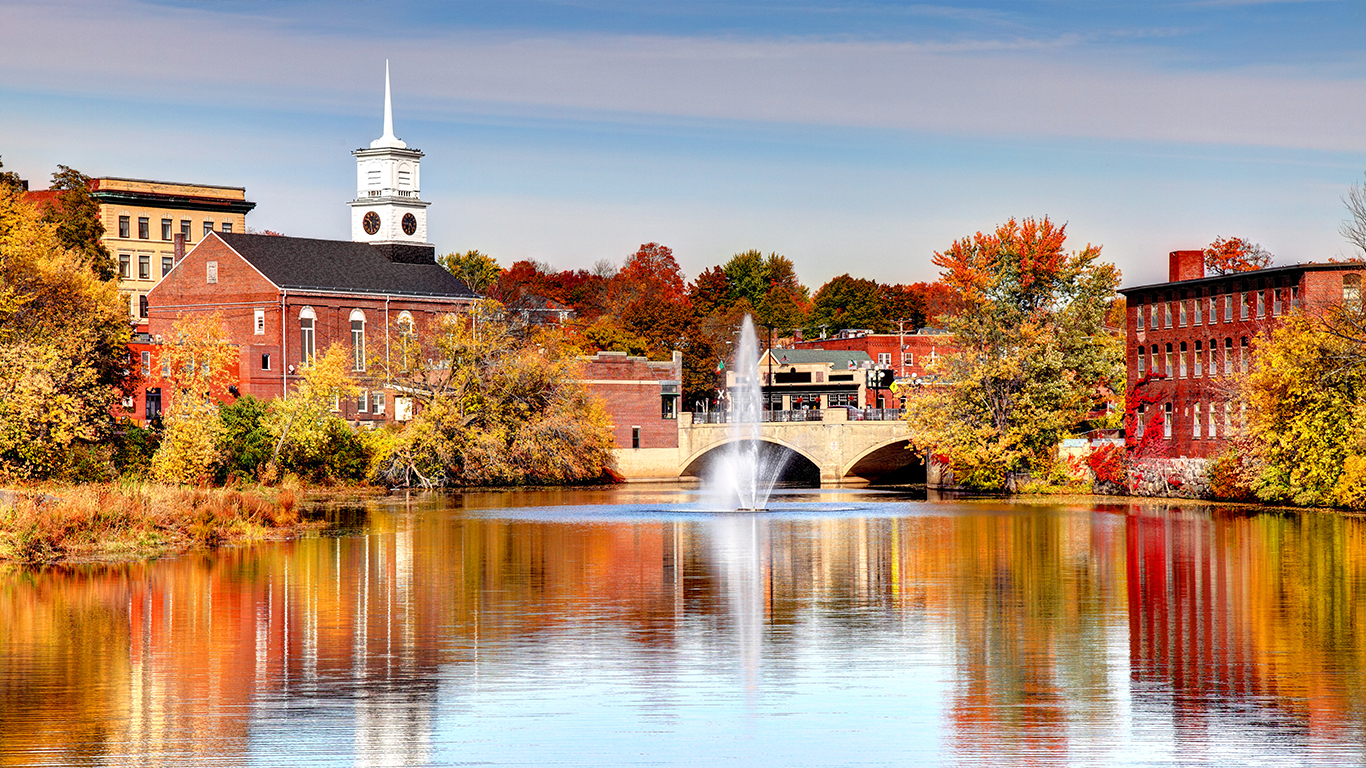
29. New Hampshire: Nashua
> Population: 87,642
> Median household income: $70,316 (-1% higher than state median)
> Homeownership rate: 54.1%
> Avg. commute time: 26.9 minutes
> Metropolitan area: Manchester-Nashua
[in-text-ad-2]
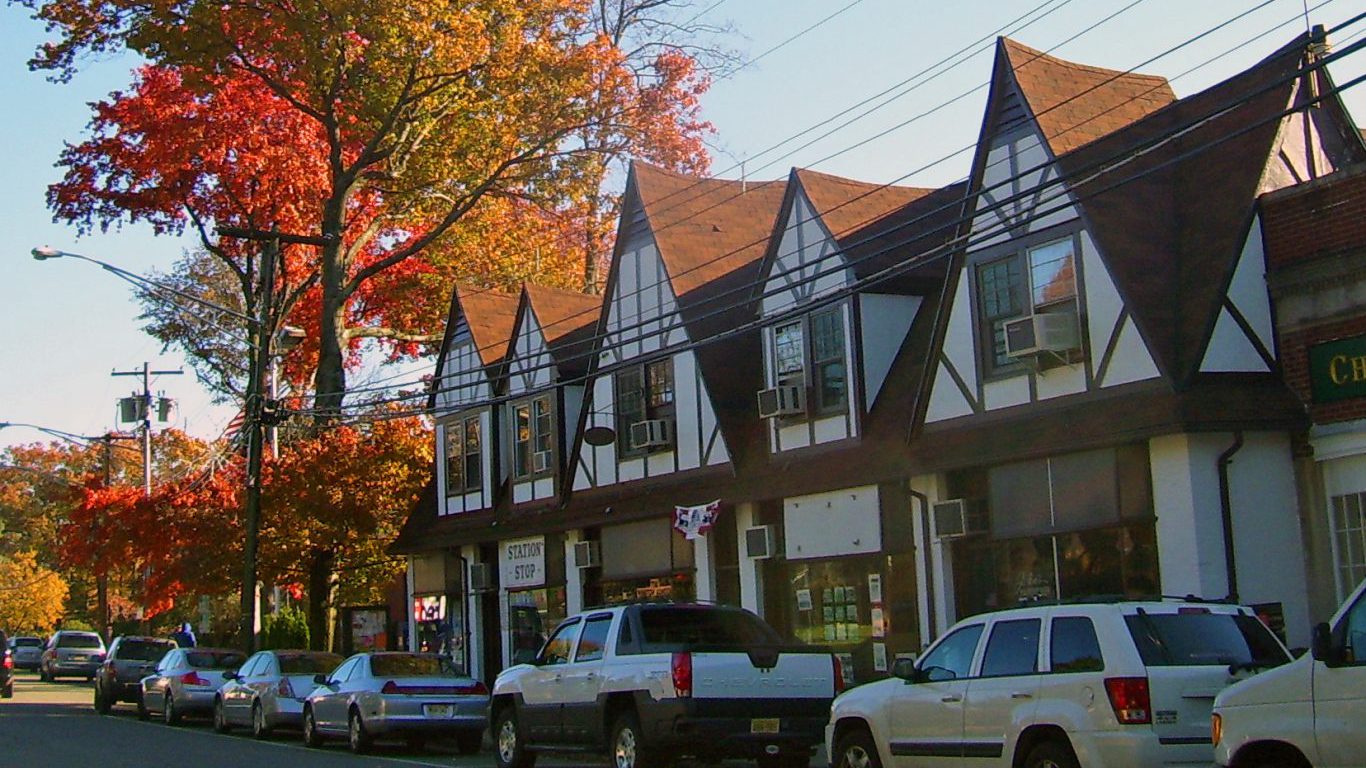
30. New Jersey: Short Hills
> Population: 13,092
> Median household income: $250,000+ (at least 227% higher than state median)
> Homeownership rate: 91.6%
> Avg. commute time: 42.6 minutes
> Metropolitan area: New York-Newark-Jersey City
31. New Mexico: Sandia Heights
> Population: 3,337
> Median household income: $101,395 (117% higher than state median)
> Homeownership rate: 93.4%
> Avg. commute time: 22.9 minutes
> Metropolitan area: Albuquerque
[in-text-ad]
32. New York: Brookville
> Population: 3,576
> Median household income: $250,000+ (at least 298% higher than state median)
> Homeownership rate: 93.6%
> Avg. commute time: 31.7 minutes
> Metropolitan area: New York-Newark-Jersey City
33. North Carolina: Weddington
> Population: 10,388
> Median household income: $133,262 (165% higher than state median)
> Homeownership rate: 98.0%
> Avg. commute time: 31.0 minutes
> Metropolitan area: Charlotte-Concord-Gastonia
34. North Dakota: Horace
> Population: 2,603
> Median household income: $110,870 (81% higher than state median)
> Homeownership rate: 97.2%
> Avg. commute time: 21.1 minutes
> Metropolitan area: Fargo
[in-text-ad-2]
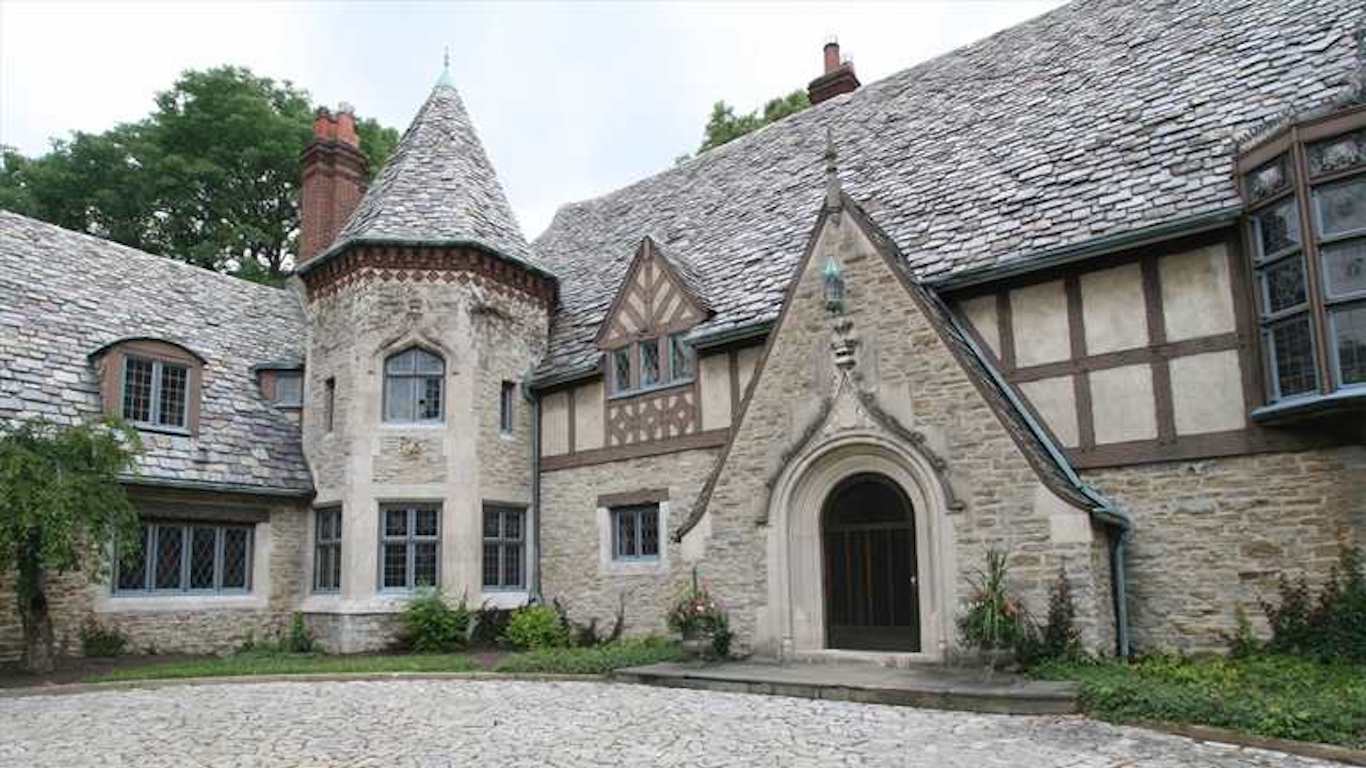
35. Ohio: The Village Of Indian Hill
> Population: 5,853
> Median household income: $215,679 (312% higher than state median)
> Homeownership rate: 96.6%
> Avg. commute time: 22.6 minutes
> Metropolitan area: Cincinnati
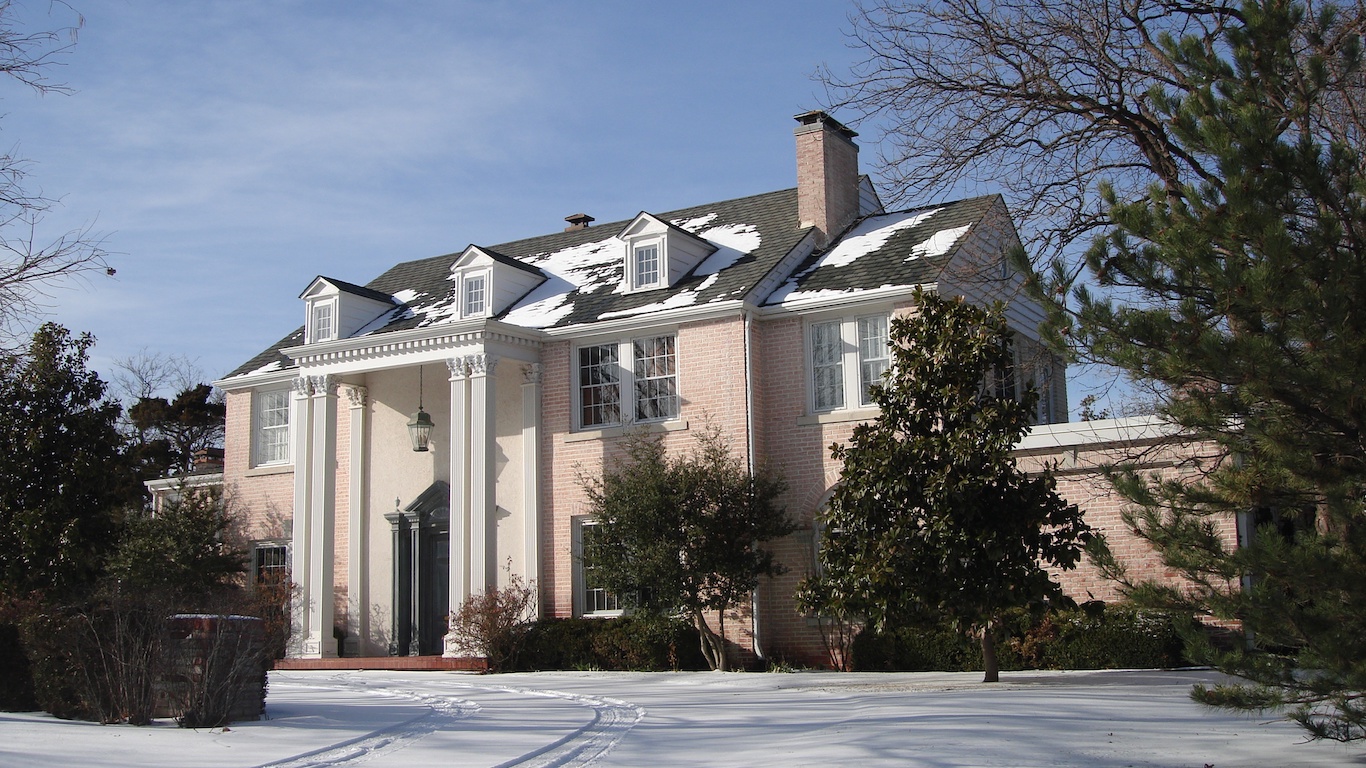
36. Oklahoma: Nichols Hills
> Population: 3,866
> Median household income: $144,833 (191% higher than state median)
> Homeownership rate: 84.4%
> Avg. commute time: 14.6 minutes
> Metropolitan area: Oklahoma City
[in-text-ad]

37. Oregon: Bull Mountain
> Population: 9,698
> Median household income: $108,324 (93% higher than state median)
> Homeownership rate: 85.3%
> Avg. commute time: 28.0 minutes
> Metropolitan area: Portland-Vancouver-Hillsboro

38. Pennsylvania: Slippery Rock University
> Population: 2,241
> Median household income: N/A ( higher than state median)
> Homeownership rate: 100.0%
> Avg. commute time: 14.6 minutes
> Metropolitan area: Pittsburgh

39. Rhode Island: Warwick
> Population: 81,218
> Median household income: $71,191 (17% higher than state median)
> Homeownership rate: 71.8%
> Avg. commute time: 24.3 minutes
> Metropolitan area: Providence-Warwick
[in-text-ad-2]
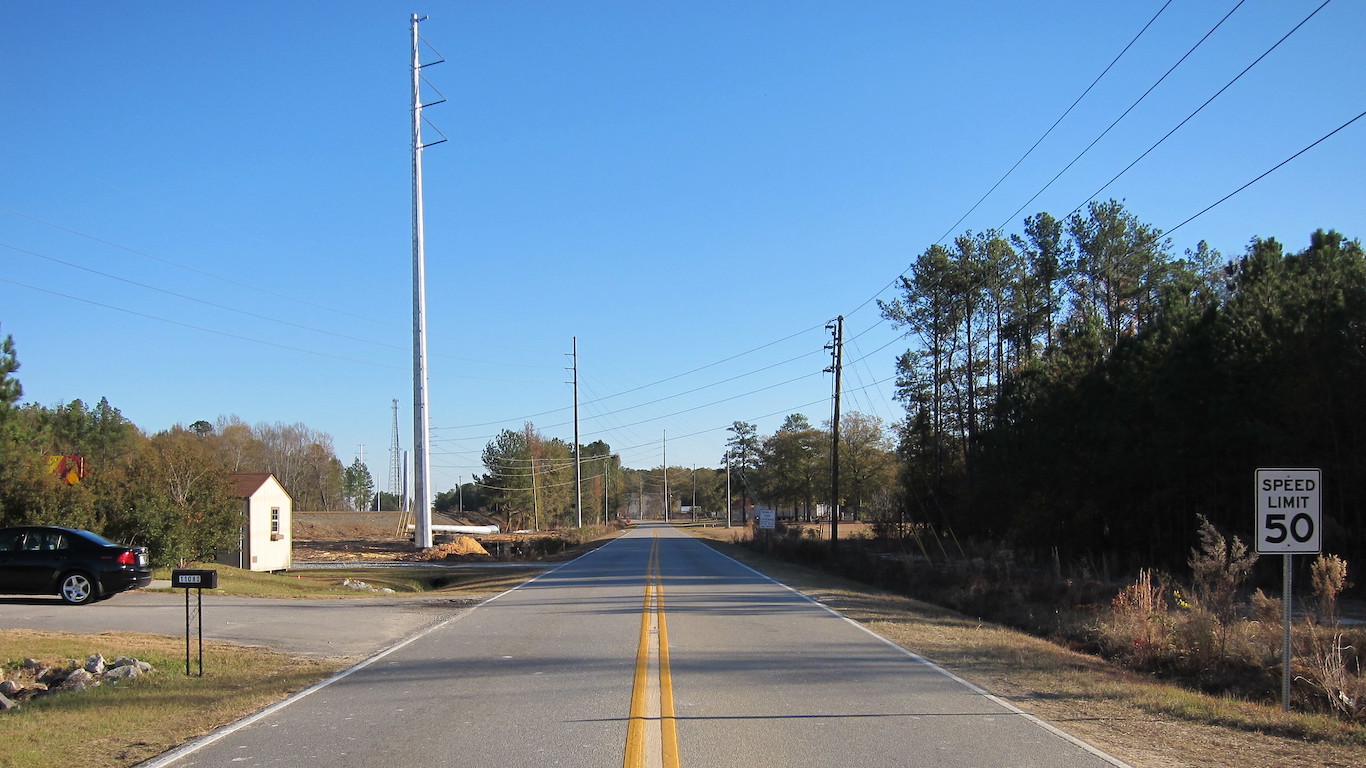
40. South Carolina: Blythewood
> Population: 2,864
> Median household income: $87,827 (80% higher than state median)
> Homeownership rate: 91.8%
> Avg. commute time: 22.1 minutes
> Metropolitan area: Columbia
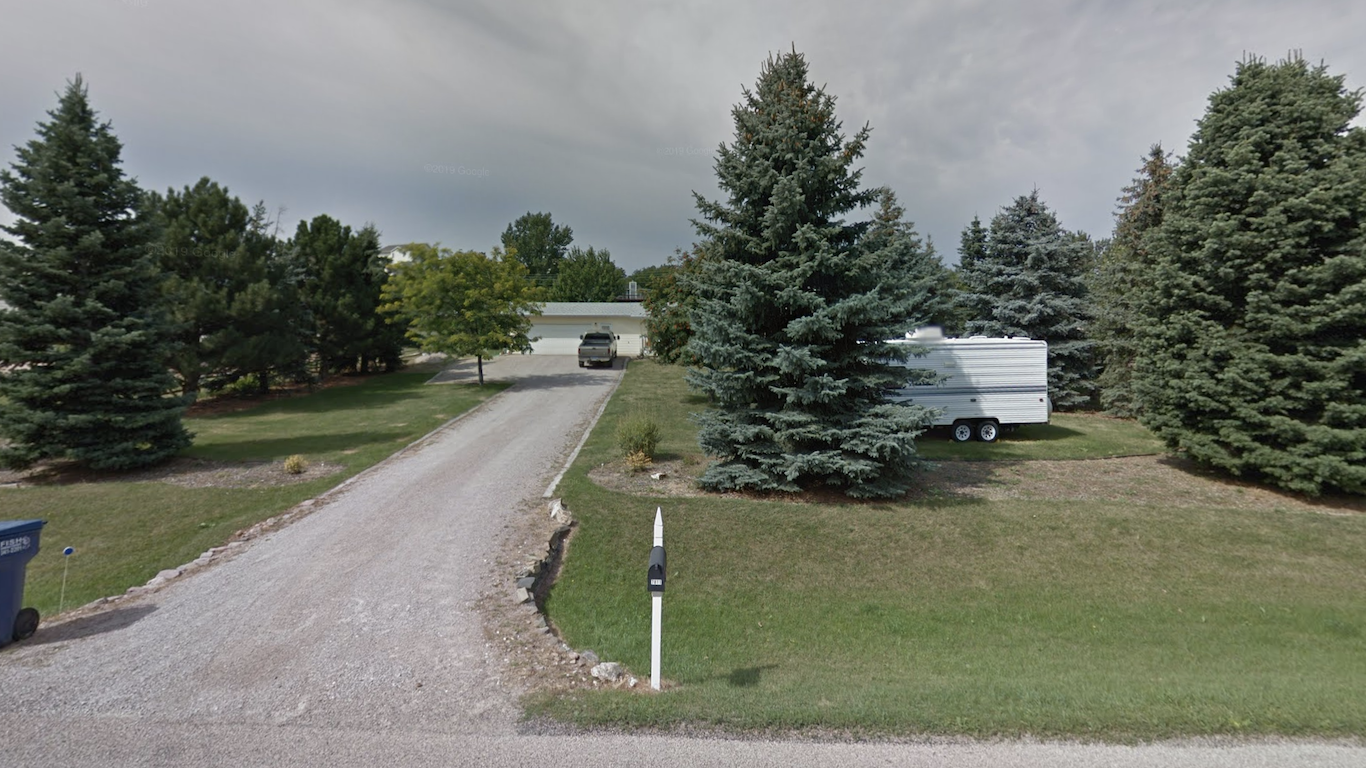
41. South Dakota: Colonial Pine Hills
> Population: 2,192
> Median household income: $90,833 (68% higher than state median)
> Homeownership rate: 100.0%
> Avg. commute time: 19.8 minutes
> Metropolitan area: Rapid City
[in-text-ad]

42. Tennessee: Belle Meade
> Population: 2,584
> Median household income: $195,000 (300% higher than state median)
> Homeownership rate: 90.6%
> Avg. commute time: 20.3 minutes
> Metropolitan area: Nashville-Davidson–Murfreesboro–Franklin
43. Texas: Piney Point Village
> Population: 3,358
> Median household income: $250,000+ (at least 338% higher than state median)
> Homeownership rate: 99.2%
> Avg. commute time: 21.0 minutes
> Metropolitan area: Houston-The Woodlands-Sugar Land
44. Utah: Highland
> Population: 17,952
> Median household income: $128,938 (97% higher than state median)
> Homeownership rate: 89.0%
> Avg. commute time: 21.0 minutes
> Metropolitan area: Provo-Orem
[in-text-ad-2]
45. Vermont: South Burlington
> Population: 18,773
> Median household income: $66,197 (15% higher than state median)
> Homeownership rate: 61.7%
> Avg. commute time: 16.3 minutes
> Metropolitan area: Burlington-South Burlington

46. Virginia: Great Falls
> Population: 15,589
> Median household income: $230,450 (235% higher than state median)
> Homeownership rate: 96.0%
> Avg. commute time: 35.7 minutes
> Metropolitan area: Washington-Arlington-Alexandria
[in-text-ad]
47. Washington: Clyde Hill
> Population: 3,231
> Median household income: $205,500 (211% higher than state median)
> Homeownership rate: 91.1%
> Avg. commute time: 20.9 minutes
> Metropolitan area: Seattle-Tacoma-Bellevue

48. West Virginia: Shannondale
> Population: 3,514
> Median household income: $72,143 (64% higher than state median)
> Homeownership rate: 80.1%
> Avg. commute time: 47.4 minutes
> Metropolitan area: Washington-Arlington-Alexandria
49. Wisconsin: Merton
> Population: 3,574
> Median household income: $151,818 (167% higher than state median)
> Homeownership rate: 96.1%
> Avg. commute time: 27.1 minutes
> Metropolitan area: Milwaukee-Waukesha
[in-text-ad-2]
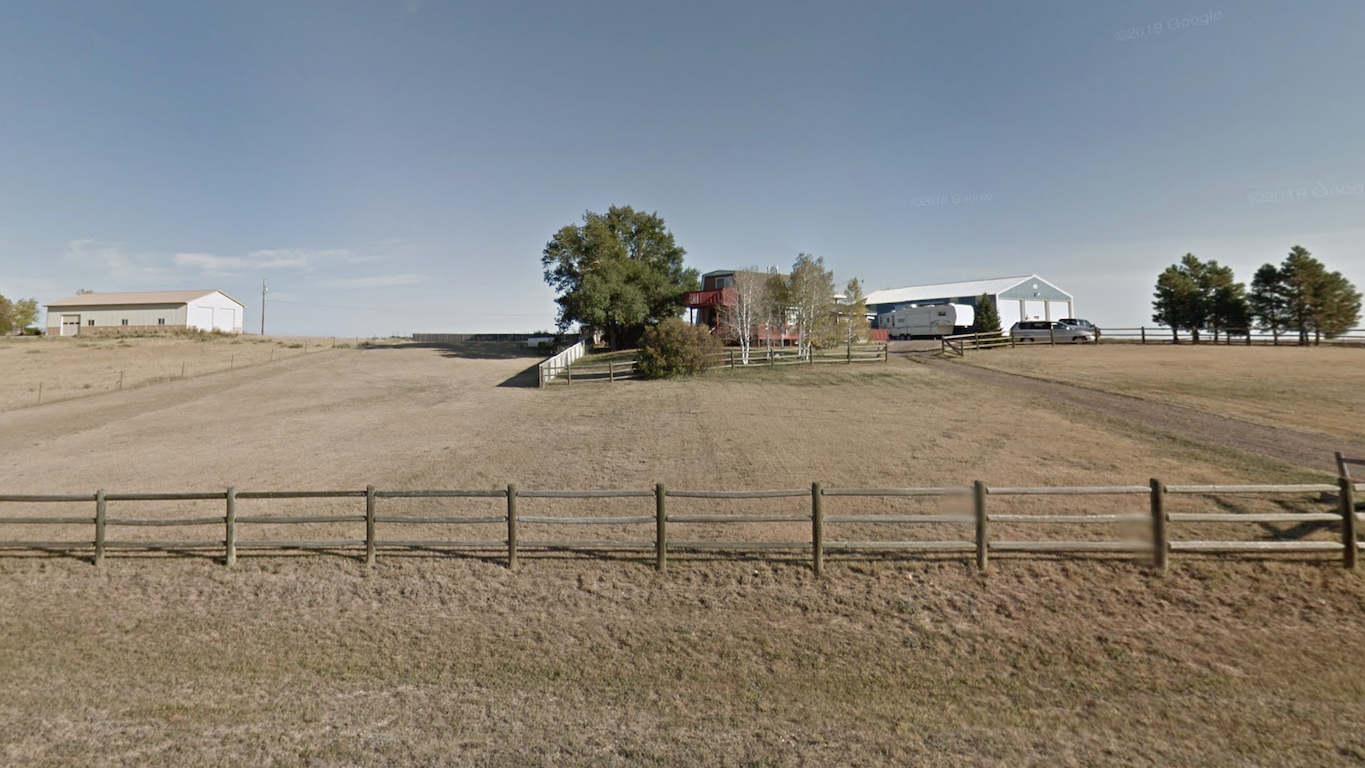
50. Wyoming: Ranchettes
> Population: 6,001
> Median household income: $94,509 (55% higher than state median)
> Homeownership rate: 93.1%
> Avg. commute time: 20.5 minutes
> Metropolitan area: Cheyenne
Methodology
To determine the best suburb in every state, 24/7 Wall St. constructed an index of 10 measures for places within metropolitan statistical areas in the United States.
We considered as suburbs all cities, towns, villages, boroughs, or Census-designated places with between 2,000 and 100,000 residents that fall within the boundaries of a metropolitan statistical area — a Census-defined geography consisting of a core city and its adjacent communities, meant to approximate economic zones — yet not be the principal city of the metropolitan area in which it is located. In states with more than three metropolitan statistical areas, the principal or core city of the metropolitan area must have at least 100,000 residents to be considered.
(1) Median home values, (2) the median number of rooms in occupied housing units, (3) unemployment rates for the population 16 years and over, (4) the average travel times to work, (5) median household incomes, (6) homeownership rates, and (7) poverty rates were included in the index at full weight. These data came from the Census Bureau’s American Community Survey and are five-year estimates for 2013 to 2017.
Data on (8) the number of violent crimes reported per 100,000 residents and (9) the number of property crimes reported per 100,000 residents came from the FBI’s 2018 Uniform Crime Report and were included in the index at full weight.
Data on the (10) percentage of the population with access to places for physical activity in the county where the suburb is located came from the 2019 County Health Rankings & Roadmaps, a joint program of the Robert Wood Johnson Foundation and the University of Wisconsin Population Health Institute. This measure was included in the index at full weight.
To measure the quality-of-life advantages of living in the suburbs over living in the core city, each of these measures was also calculated as a percentage of its corresponding value in each suburb’s core city and included in the index at half weight.
Retirement can be daunting, but it doesn’t need to be.
Imagine having an expert in your corner to help you with your financial goals. Someone to help you determine if you’re ahead, behind, or right on track. With SmartAsset, that’s not just a dream—it’s reality. This free tool connects you with pre-screened financial advisors who work in your best interests. It’s quick, it’s easy, so take the leap today and start planning smarter!
Don’t waste another minute; get started right here and help your retirement dreams become a retirement reality.
Thank you for reading! Have some feedback for us?
Contact the 24/7 Wall St. editorial team.